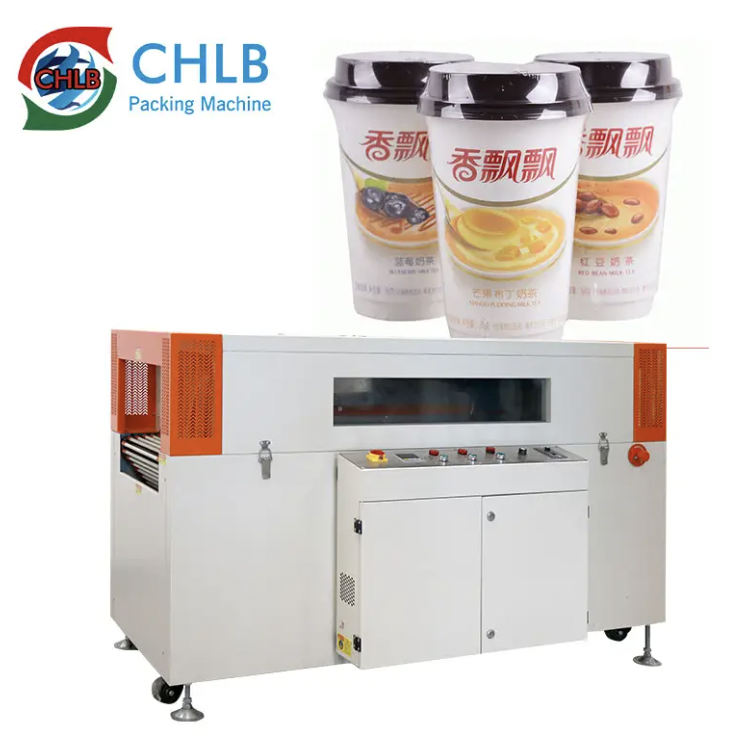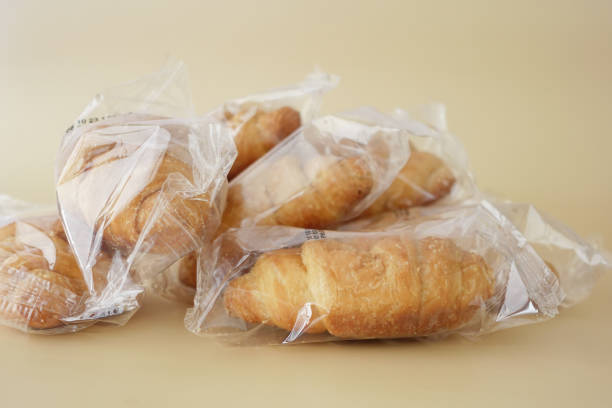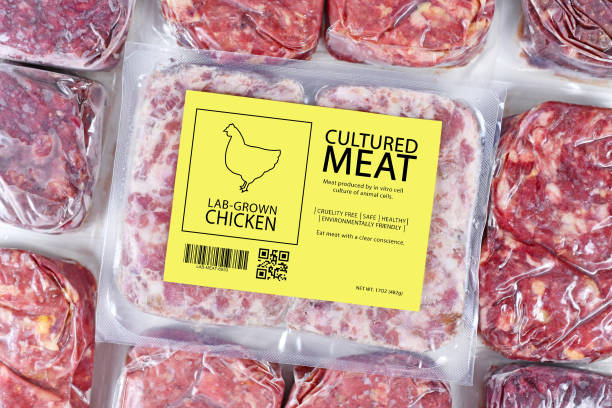오늘날의 빠르게 진행되는 제조 및 포장 산업에서, 효율성 및 제품 프레젠테이션은 중요한 역할을합니다. 수축 포장 기계가 필수 불가능한 도구로 나타났습니다, 속도와 정밀도로 다양한 제품을 포장하기위한 안정적인 방법 제공. 이 안내서는 수축 포장 기계가 무엇인지 탐구합니다, 그 유형을 탐색합니다, 구성 요소, 재료, 프로세스, 장점, 올바른 기계를 선택하기위한 고려 사항.
수축 포장은 무엇입니까??
수축 포장은 포장 과정입니다 열 수축 필름이 제품 또는 제품 그룹 주위에 적용되는 곳. 그런 다음 영화가 가열됩니다, 제품 주위에 단단히 수축시킵니다, 안전하고 시각적으로 매력적인 패키지 만들기. 이 방법은 먼지로부터 내용물을 보호 할뿐만 아니라, 수분, 그리고 변조하지만 선반 호소력을 향상시킵니다.
수축 포장 기계의 유형

수동 수축 포장 기계
기본 원칙
수동 수축 포장기는 운영자가 제품에 수동으로 제품을 필름에 배치 한 다음 히트 건 또는 가열 요소를 사용하여 필름을 밀봉하고 수축해야합니다.. 이 기계는 볼륨이 상대적으로 낮고 포장 크기와 모양의 유연성이 필수적인 소규모 작업에 이상적입니다..
소규모 운영의 응용 프로그램
그들은 일반적으로 소매 환경에서 사용됩니다, 소기업, 고속 자동화가 필요없는 비용 효율적인 포장 솔루션을 찾는 신생 기업.
반자동 수축 포장 기계
기본 원칙
반자동 기계는 여전히 수동 제품의 제품 로딩이 필요한 상태에서 밀봉 및 수축 공정을 자동화합니다.. 그들은 제품 주위에 필름을 효율적으로 밀봉하고 축소하는 밀봉 바와 열 터널이 장착되어 있습니다.. 반자동 기계는 중간 정도의 생산량과 포장의 일관성이 필요한 중간 규모 운영에 적합합니다..
중간 규모 운영의 응용 프로그램
이 기계는 같은 산업에서 선호됩니다 음식과 음료, 화장품, 그리고 의약품 수동 기계에 비해 다양한 포장 크기와 모양이 향상된 다양한 포장 크기와 모양을 처리 할 수있는 능력.
자동 수축 포장 기계
기본 원칙
자동 수축 포장 기계 제품 공급을위한 완전 자동화 시스템을 통합합니다, 필름 포장, 밀봉, 그리고 수축. 그들은 컨베이어를 사용합니다, 고급 밀봉 메커니즘, 가열 터널로 포장 공정을 간소화합니다. 자동 산업 수축 랩 머신은 높은 처리량과 일관된 포장 품질을 요구하는 대규모 작업을 위해 설계되었습니다..
대규모 운영의 응용 프로그램
제조와 같은 산업, 기호 논리학, 유통은 자동 수축 포장 기계에 의존하여 엄격한 생산 마감일을 충족시키고 운송 및 보관 중에 제품 무결성을 유지합니다..
수축 포장 기계의 주요 구성 요소
가열 요소
수축 포장기는 가열 요소 또는 열 터널을 사용하여 열 수축 필름을 활성화합니다., 포장 된 제품 주변에서 균일하게 축소됩니다. 온도 제어는 제품 품질을 손상시키지 않고 최적의 수축을 달성하는 데 중요합니다..
컨베이어 시스템
컨베이어 시스템은 수축 포장 과정을 통해 제품을 운반합니다, 지속적이고 효율적인 포장 작업 보장. 다양한 제품 크기와 포장 속도를 수용하기 위해 다양한 구성으로 제공됩니다..
밀봉 메커니즘
밀봉 막대 또는 턱과 같은 밀봉 메커니즘은 열과 압력 을가하여 강하게 생성합니다., 열 수축 필름의 밀폐 된 밀봉, 패키지 제품 확보 및 패키지 무결성 향상.
제어 시스템
최신 수축 랩 머신에는 온도를 조절하는 고급 제어 시스템이 장착되어 있습니다., 컨베이어 속도, 일관되고 안정적인 포장 결과를 보장하기위한 기타 매개 변수. 사용자 친화적 인 인터페이스는 기계 작동 및 문제 해결을 단순화합니다.
수축 포장에 사용되는 재료

PVC (폴리 비닐 클로라이드)
PVC 수축 필름은 명확성과 유연성으로 유명합니다., 불규칙한 모양 또는 크기의 제품 포장에 적합합니다.. 그들은 좋은 수축 특성을 제공하며 종종 소매 포장에 사용됩니다..
POF (폴리올레핀)
POF 수축 필름은 높은 선명도와 우수한 씰 강도를 제공합니다., 음식 품목을 포장하는 데 이상적입니다, 전자 제품, 및 제약 제품. 그들은 우수한 천공 저항을 제공하며 고속 포장 기계와 호환됩니다..
체육 (폴리에틸렌)
PE 수축 필름은 다재다능하고 비용 효율적입니다, 적당한 수축 특성과 우수한 내구성을 제공합니다. 대량 상품 및 불규칙한 제품을 포장하기 위해 산업 응용 분야에서 일반적으로 사용됩니다..
수축 포장 과정
#1: 사전 처리
재료 선택: 올바른 수축 필름 선택은 제품 특성을 기반으로 중요합니다., 포장 요구 사항, 그리고 환경 적 요인. 고려 사항에는 필름 두께가 포함됩니다, 명쾌함, 및 수축 특성.
준비 단계: 수축 포장을위한 제품 준비 효율적인 포장을 위해이를 구성하고 정렬하는 것이 포함됩니다.. 이 단계는 원활한 처리 및 균일 한 패키지 모양을 보장합니다.
#2: 쌈
제품 배치: 제품은 수축 필름에 배치됩니다, 수동 또는 자동으로, 기계 유형에 따라. 적절한 정렬 및 간격 필름 폐기물을 최소화하고 균일 한 수축을 보장합니다..
밀봉 및 수축: 밀봉 막대 또는 밀봉 턱은 필름에 열과 압력 을가합니다., 제품 주위에 안전한 씰 생성. 그런 다음 터널을 가열 한 다음 필름을 균일하게 수축시킵니다, 제품 윤곽에 단단히 준수합니다.
#3: 후 처리
냉각: 밀봉 및 축소 패키지를 냉각시키는 냉각 스테이션 또는 주변 공기, 취급 및 저장을 위해 안정화. 제어 냉각은 왜곡을 방지하고 패키지 무결성을 보장합니다.
품질 관리: 씰 무결성을 위해 완성 된 패키지 검사, 미학, 전반적인 품질은 제품이 포장 표준 및 고객 기대치를 충족시킬 수 있도록합니다..
수축 포장기 사용의 장점

비용 효율성
수축 포장기는 수동 포장과 관련된 인건비를 줄이면서 포장 효율 및 재료 사용을 개선합니다.. 또한 포장 폐기물을 최소화합니다, 전체 비용 절감에 기여합니다.
디자인의 유연성
다양한 모양의 제품을 포장하는 능력, 크기, 구성은 브랜딩 기회와 소비자 호소력을 향상시킵니다. 수축 포장은 제품 기능을 보여주고 선반 존재를 향상시키는 맞춤형 포장 설계를 허용합니다..
속도와 효율성
자동 밀봉 및 수축 프로세스는 수동 방법에 비해 포장 속도 및 처리량을 크게 증가시킵니다.. 이 효율성은 대량 생산 요구를 충족시키고 경쟁 우위를 유지하는 데 중요합니다..
향상된 제품 보호
수축 랩 필름은 먼지에 대한 보호 장벽을 제공합니다, 수분, 그리고 변조, 제품 유적 수명을 연장하고 저장 및 운송 중 제품 신선함 및 무결성 보장.
수축 포장 대. 다른 포장 방법
수축 포장은 골판지 상자와 같은 전통적인 포장 방법 및 비용 효율성 측면에서 수동 포장에 비해 뚜렷한 이점을 제공합니다., 제품 가시성, 보호 능력. 재료 폐기물 감소 및 개선 된 제품 프리젠 테이션으로보다 환경 친화적 인 솔루션을 제공합니다..
올바른 수축 포장기 선택
귀하의 요구를 평가합니다
생산량을 평가하십시오, 포장 요구 사항, 작업에 가장 적합한 고속 수축 랩 머신을 결정하기위한 공간 제약 조건.
찾아야 할 주요 기능
기계 용량과 같은 요소를 고려하십시오, 필름 호환성, 유지 보수의 용이성, 수축 포장기를 선택할 때 기존 생산 라인과의 통합.
예산 고려 사항
열 수축 필름 포장 기계의 ROI를 극대화하기 위해 장기 운영 혜택 및 비용 절감과 선불 투자 비용의 균형.
제조업체 평판 및 지원
선택하다 평판이 좋은 수축 포장 기계 공급 업체 양질의 장인 정신으로 유명합니다, 기술 전문 지식, 신뢰할 수있는 성능과 최소한의 다운 타임을 보장하기위한 반응 형 고객 서비스.
결론
수축 포장기는 효율적인 제공을 통해 포장 산업에 혁명을 일으켰습니다., 비용 효율적입니다, 다양한 산업 분야에서 제품을 보호하고 제시하기위한 다목적 솔루션. 유형 이해, 구성 요소, 재료, 복잡성을 처리합니다, 수축 포장 기계의 장점은 비즈니스가 정보에 입각 한 결정을 내리고 경쟁력있는 시장 환경에서 포장 기능을 향상시킬 수있게 해줍니다..
수축 포장 기계의 FAQ
1. 수축 포장 기계 사용에서 산업이 가장 큰 혜택을받는 것?
수축 포장 기계는 식품 및 음료와 같은 산업에서 널리 사용됩니다., 의약품, 전자 제품, 화장품, 향상된 보호 및 프레젠테이션으로 제품을 효율적으로 포장하는 능력에 대한 물류.
2. 수축 포장은 지속 가능한 포장 관행에 어떻게 기여합니까??
수축 포장은 재료 폐기물을 줄입니다, 재활용 가능한 필름 옵션을 제공합니다, 포장재 사용을 최적화합니다, 다양한 산업에서 지속 가능한 포장 이니셔티브와 일치합니다.
3. 매뉴얼 중에서 선택할 때 주요 고려 사항은 무엇입니까?, 반자동, 포장을위한 자동 수축 기계?
생산량을 고려하십시오, 인건비, 포장 속도, 운영 요구 및 예산에 가장 적합한 기계 유형을 결정하기 위해 포장 설계의 유연성.
4. 수축 포장은 제품 가시성 및 브랜드 매력을 향상시키는 방법?
수축 포장은 명확하게 허용됩니다, 제품 기능 및 브랜딩 요소를 보여주는 맞춤형 포장 디자인, 소비자의 관심을 끌고 선반의 존재를 향상시킵니다.
5. 수축 포장 과정에서 온도 제어는 어떤 역할을합니까??
정확한 온도 제어는 제품 주변의 필름의 균일 한 수축을 보장합니다., 패키지 무결성 유지, 패키지 제품의 미적 매력을 향상시킵니다.















